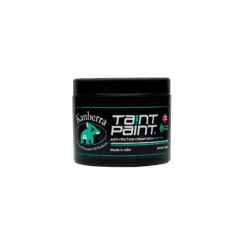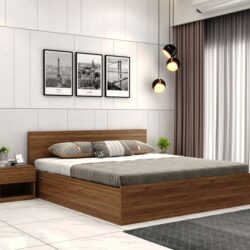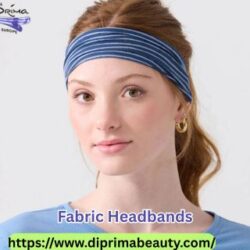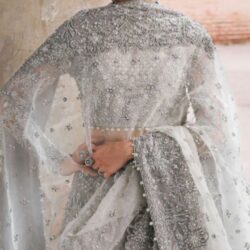Starting a fashion brand means making countless decisions about materials, suppliers, and quality standards. Among all fabric choices, linen fabric stands out as a smart option for new brands looking to build credibility and attract conscious consumers.
Linen fabric offers new fashion brands a perfect combination of sustainability, durability, and market appeal. This natural fiber has gained significant popularity among consumers who value quality and environmental responsibility. For emerging brands, choosing linen fabric can differentiate your products in a crowded marketplace while building a foundation for long-term success.
This guide covers everything you need to know about sourcing linen fabric for your fashion brand. You’ll learn about different types of linen, reliable sourcing methods, supplier evaluation criteria, and practical tips for maintaining fabric quality. Whether you plan to buy fabric online or work directly with manufacturers, this information will help you make informed decisions for your brand.
Why New Fashion Brands Choose Linen Fabric
Linen fabric provides multiple advantages that make it particularly suitable for new fashion brands. Understanding these benefits helps you communicate your product value to customers and justify your material choices to stakeholders.
Sustainability Appeals to Modern Consumers
Linen fabric comes from the flax plant, which requires minimal water and grows in poor soil conditions. This sustainable production process resonates with environmentally conscious consumers who research brands before making purchases. When you choose linen fabric, you’re positioning your brand as responsible and forward-thinking.
The biodegradable nature of linen fabric means your products won’t contribute to textile waste problems. This environmental benefit becomes a powerful marketing point for new brands trying to establish their values and attract loyal customers.
Durability Reduces Customer Complaints
New fashion brands cannot afford quality issues that damage their reputation. Linen fabric naturally resists wear and tear, maintaining its appearance through multiple wash cycles. This durability means fewer customer returns and complaints, protecting your brand’s reputation during critical early growth periods.
The strength of linen fabric also makes it suitable for various garment types, from casual wear to structured pieces. This versatility allows new brands to expand their product lines without changing suppliers or material knowledge.
Comfort Features Drive Repeat Purchases
Linen fabric offers superior breathability and moisture absorption compared to synthetic alternatives. These comfort features encourage customer satisfaction and repeat purchases, which new brands need to build sustainable revenue streams.
The temperature-regulating properties of linen fabric make it suitable for year-round wear in many climates. This extended wearability increases the perceived value of your products and justifies higher price points.
Understanding Different Types of Linen Fabric
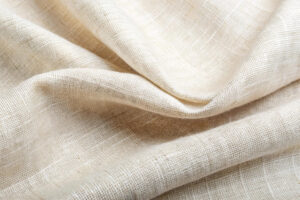
Not all linen fabric performs the same way or suits every application. Learning about different types helps you select the right materials for your specific product designs and target market expectations.
- Weight Variations Affect Drape and Use
Lightweight linen fabric (under 200 GSM) works well for flowing garments like blouses and dresses. Medium-weight options (200-300 GSM) provide structure for pants and jackets without adding bulk. Heavy linen fabric (over 300 GSM) suits outerwear and home goods applications.
When you buy fabric online, weight specifications help you predict how the material will behave in your designs. New brands should test small quantities of different weights before committing to large orders.
- Weave Patterns Create Different Textures
Plain weave linen fabric offers the classic texture most consumers recognize. Twill weave creates diagonal patterns that add visual interest to garments. Herringbone and other complex weaves provide premium appearance options for higher-end product lines.
Understanding weave patterns helps you communicate specific requirements when you buy fabric online or speak with suppliers. This technical knowledge prevents misunderstandings and ensures you receive materials that match your design intentions.
- Finishes Determine Final Appearance
Raw linen fabric maintains its natural texture and slight irregularities. Stone-washed finishes create softer hand feel and vintage appearance. Enzyme treatments can improve drape while maintaining the fabric’s natural character.
Pre-shrunk linen fabric reduces manufacturing complications and customer complaints about fit changes after washing. When sourcing linen fabric, specify finish requirements clearly to avoid surprises during production.
Where to Source Quality Linen Fabric
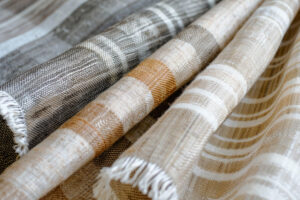
Finding reliable linen fabric suppliers requires research and careful evaluation. New fashion brands have several sourcing options, each with distinct advantages and challenges.
- Online Fabric Marketplaces Offer Convenience
When you buy fabric online, you access global suppliers without travel costs or time constraints. Fabriclore leads online linen fabric sourcing with customization options, competitive pricing, and reliable delivery. Their platform allows new brands to order small quantities for testing while providing scaling options for growth.
Other online platforms like Mood Fabrics and Denver Fabrics offer linen fabric selections, though with less customization support. Compare minimum order quantities, shipping costs, and return policies before committing to any supplier.
Online sourcing works particularly well for new brands with limited budgets and staff. You can research options thoroughly, read reviews, and make informed decisions without pressure from sales representatives.
- Trade Shows Provide Direct Supplier Access
Textile trade shows like Texworld and Première Vision allow you to touch and examine linen fabric samples directly. These events connect you with manufacturers who might not have strong online presence but offer excellent products and services.
Trade show attendance requires significant time and travel investment, which challenges new brands with limited resources. However, the relationships you build at these events often provide long-term sourcing advantages and better negotiation positions.
- Local Textile Districts Support Quick Turnaround
Major cities often have textile districts where you can source linen fabric locally. Los Angeles, New York, and other fashion centers maintain fabric stores that serve independent designers and small brands.
Local sourcing reduces shipping time and costs while allowing you to inspect materials before purchase. However, local options may limit your fabric variety and increase per-yard costs compared to online sources.
Essential Questions for Linen Fabric Suppliers
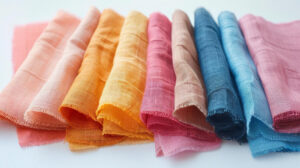
Proper supplier evaluation prevents quality problems and supply chain disruptions that could damage your new brand. Ask these specific questions to assess potential linen fabric sources.
- Origin and Quality Certifications
Request detailed information about where the flax was grown and how the linen fabric was processed. European linen, particularly from Belgium and France, generally commands premium prices due to superior quality and processing methods.
Ask about certifications like OEKO-TEX Standard 100 or GOTS (Global Organic Textile Standard) that verify chemical safety and environmental standards. These certifications become valuable marketing points for your brand and ensure customer safety.
Documentation of quality standards protects your brand reputation and demonstrates professionalism to potential retail partners. When you buy fabric online, reliable suppliers provide certification copies without hesitation.
- Minimum Order Requirements and Flexibility
New fashion brands often start with small production runs to test market response. Ask about minimum order quantities for different linen fabric types and whether suppliers offer sampling programs.
Some suppliers require large minimums that exceed new brand budgets or storage capacity. Others, like Fabriclore, specialize in supporting emerging brands with flexible order quantities and growth-friendly policies.
Understand payment terms, lead times, and rush order capabilities. New brands need suppliers who accommodate changing demands and tight deadlines without compromising quality.
- Customization and Development Support
Many new brands want unique linen fabric colors, prints, or finishes to differentiate their products. Ask suppliers about customization capabilities, development minimums, and associated costs.
Some suppliers offer design services that help new brands create custom fabrics without hiring specialized staff. This support can be valuable for brands without extensive technical knowledge.
Discuss intellectual property protection for custom developments. Ensure your unique linen fabric designs remain exclusive to your brand and cannot be sold to competitors.
Maintaining Linen Fabric Quality Through Care
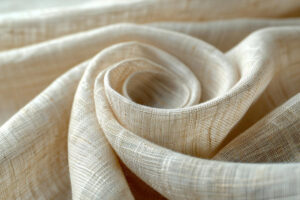
Proper handling and care instructions protect your linen fabric investment and ensure customer satisfaction. New brands must understand these requirements to avoid quality problems during production and use.
- Storage Best Practices
Store linen fabric in cool, dry conditions away from direct sunlight. Excess moisture can promote mold growth, while UV exposure can cause color fading. Use breathable storage covers rather than plastic bags that trap moisture.
Avoid folding linen fabric tightly for extended periods, as this can create permanent creases. Roll fabrics when possible or fold loosely with acid-free tissue paper between layers.
Proper storage becomes particularly important when you buy fabric online in larger quantities. Plan storage space before ordering to prevent damage from improper handling.
- Pre-Production Preparation
Pre-wash linen fabric samples to test shrinkage and color fastness before cutting production quantities. This testing prevents costly mistakes and ensures consistent results across your product line.
Press linen fabric carefully using appropriate temperature settings and steam. The natural texture of linen requires gentle handling to maintain its characteristic appearance.
Some linen fabrics benefit from relaxation time after shipping before cutting. Allow materials to rest in your production environment to minimize distortion during manufacturing.
- Customer Care Instructions
Provide clear care instructions with linen fabric garments to maintain quality and customer satisfaction. Include washing temperature recommendations, drying methods, and pressing guidelines.
Educate customers about linen fabric characteristics, including natural wrinkling and texture variations. This education prevents unrealistic expectations and reduces return rates.
Consider creating care instruction videos or detailed guides that demonstrate proper linen fabric maintenance. This additional support builds customer loyalty and positions your brand as helpful and professional.
Building Supplier Relationships for Long-Term Success
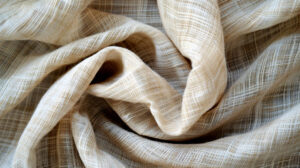
Strong supplier relationships become competitive advantages for new fashion brands. Invest time in building these partnerships for better prices, priority service, and collaborative problem-solving.
Start with smaller orders to test supplier reliability and quality consistency. Gradually increase order sizes as you build trust and verify performance. This approach protects your brand while establishing mutually beneficial relationships.
Communicate regularly with suppliers about your brand growth plans and future needs. Suppliers who understand your goals can offer better support and sometimes reserve capacity for your expanding orders.
Pay invoices promptly to build credit history and negotiate better terms. New brands with good payment records often receive priority treatment and more flexible policies from suppliers.
When you buy fabric online, maintain the same relationship-building practices through regular communication and professional interactions. Digital relationships can be just as valuable as face-to-face partnerships.
Making Linen Fabric Work for Your Brand
Linen fabric offers new fashion brands an opportunity to create quality products that appeal to conscious consumers while building sustainable business foundations. Success requires careful supplier selection, proper material handling, and clear customer communication about fabric characteristics.
Start by identifying your specific linen fabric needs based on your target products and customer expectations. Research suppliers thoroughly, focusing on those who support new brands with flexible minimums and development assistance. Fabriclore stands out as a leading option for emerging brands seeking reliable linen fabric sourcing with customization capabilities.
Test small quantities before committing to large orders, and maintain detailed records of supplier performance for future reference. Build relationships gradually while protecting your brand interests through proper documentation and clear agreements.
The investment in quality linen fabric and reliable suppliers pays dividends through customer satisfaction, reduced returns, and positive brand reputation. Take time to make informed decisions that support your long-term success in competitive fashion industry.
